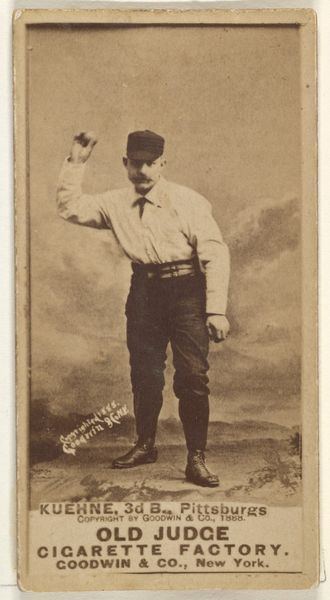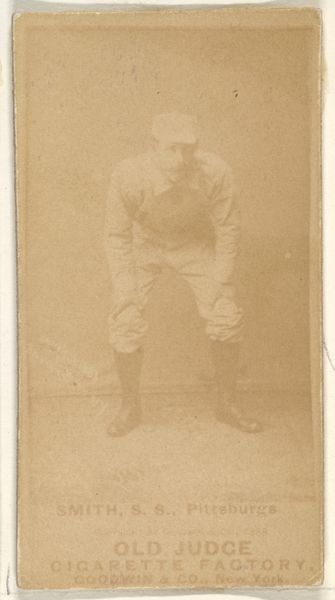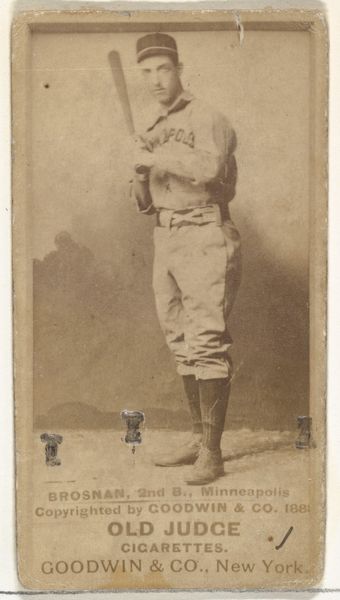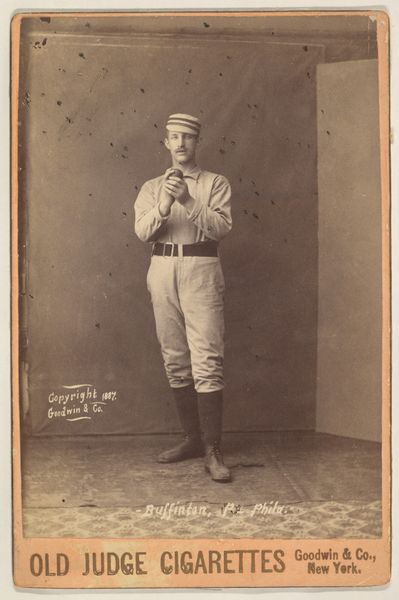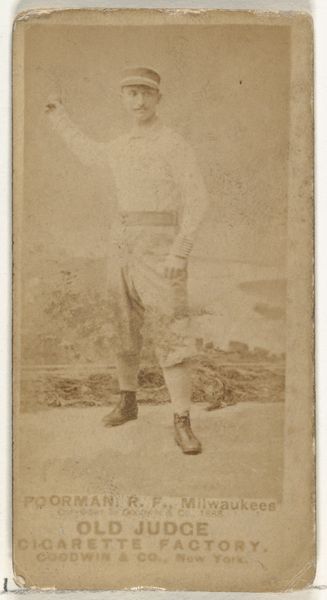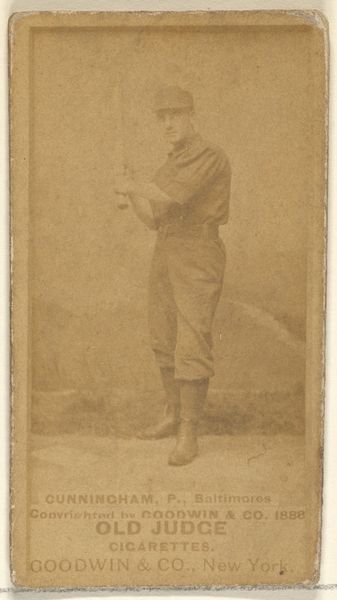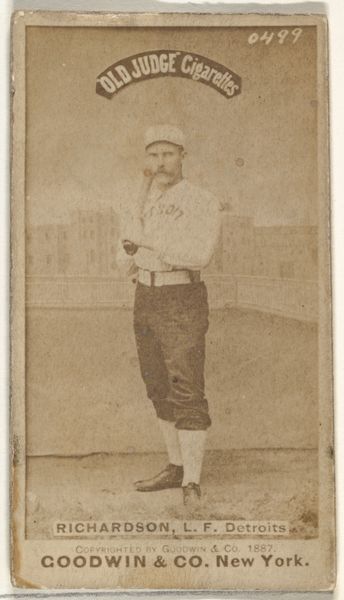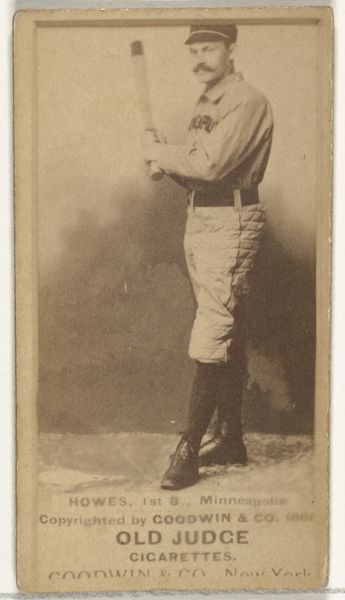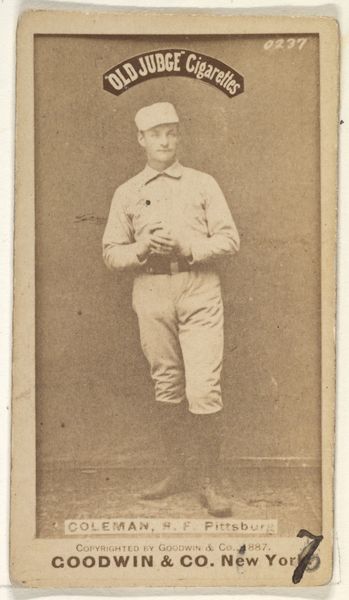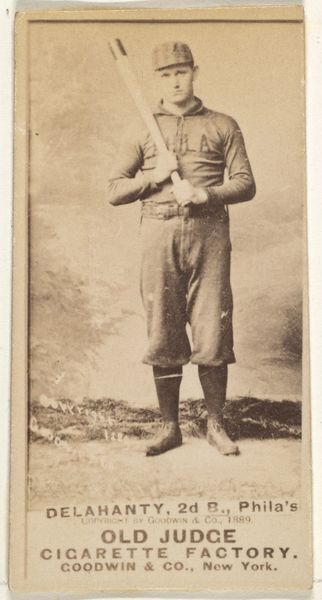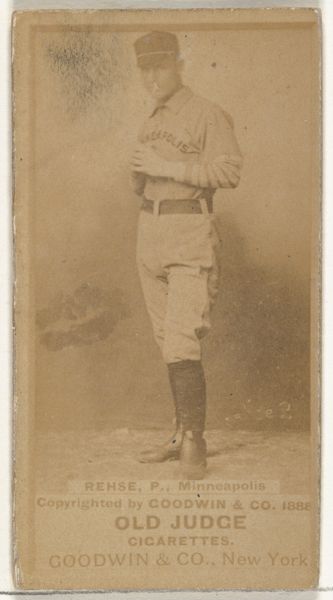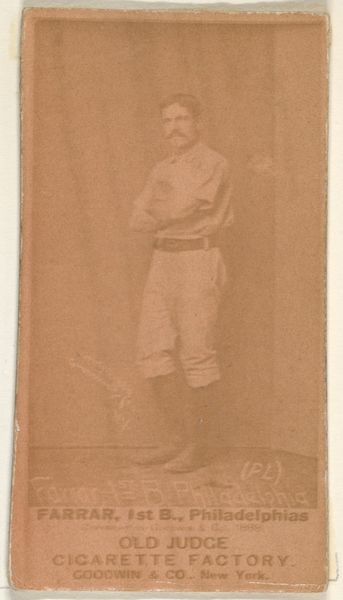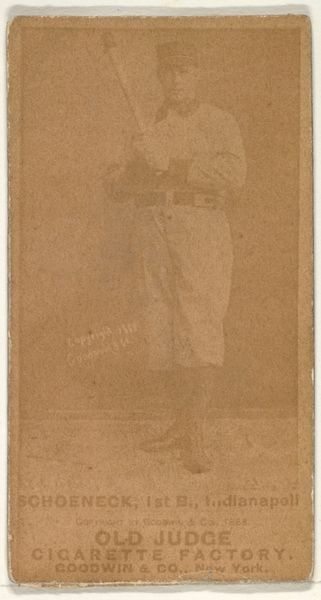
John Coleman, Right Field, Pittsburgh, from the series Old Judge Cigarettes 1887
0:00
0:00
print, photography, photomontage
#
portrait
#
photo of handprinted image
# print
#
baseball
#
photography
#
historical fashion
#
photomontage
#
men
#
athlete
Dimensions: sheet: 6 1/2 x 4 3/8 in. (16.5 x 11.1 cm)
Copyright: Public Domain
Editor: Here we have "John Coleman, Right Field, Pittsburgh, from the series Old Judge Cigarettes," a photo print from 1887 by Goodwin & Company. It’s a baseball card format, sepia-toned, with Coleman looking quite serious. It's amazing how early baseball was being marketed like this. What do you see in this piece, considering the context of its time? Curator: This isn’t just a simple baseball card; it’s a fascinating document of late 19th-century America, interwoven with ideas about celebrity, commerce, and, importantly, the construction of masculinity. We need to ask: Who was John Coleman beyond the baseball diamond? What were the prevailing notions of gender and labor? Early baseball was more than just a sport. Editor: So, it’s not just about baseball, it’s about the culture *around* baseball. Curator: Precisely. Consider the Old Judge Cigarettes branding. Tobacco advertising was pervasive, and its link to sport highlights the era’s capitalist expansion. How did these cards contribute to the commercialization of leisure and the idealized image of the American athlete? Were images such as these responsible for, or attempts to mask, realities in players' personal lives or larger labor inequities in play? Editor: That is, whether this seemingly simple image acted as propaganda, as opposed to documentation? Curator: Exactly. And it's essential to recognize the almost complete lack of racial diversity within these images. This erasure reinforced dominant racial hierarchies, shaping who was allowed to participate and be celebrated in American sport and life. How do such historical absences speak to contemporary issues of representation and equity? Editor: So by seeing just this one baseball player, we’re also being shown who *isn't* in the picture, both literally and figuratively. Curator: Precisely. Analyzing these seemingly simple images allows us to critically examine the social, political, and economic forces at play in shaping not just the game of baseball, but American society itself. Editor: I hadn’t thought about how much this little card could tell us about society. Curator: That's the power of art history—to decode these seemingly simple objects and unearth their complex stories.
Comments
No comments
Be the first to comment and join the conversation on the ultimate creative platform.
